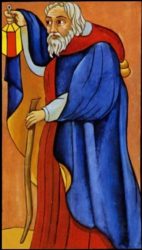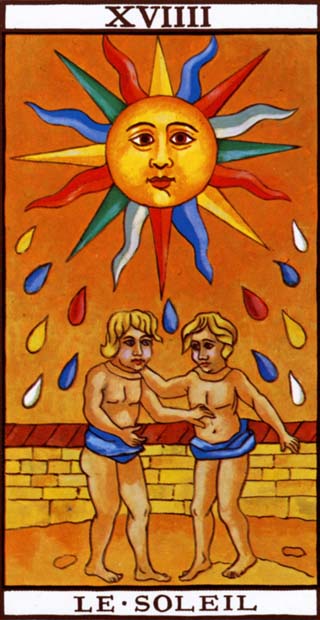The misconception is that the so-called 5 proofs for the existence of God are supposed to be so compelling that anyone, or even a robot, will know that God exists by following a syllogism. By that standard, you cannot even prove that you yourself exist, or that your wife, husband, or lover exists; i.e., any being with an “I” or Self.
That is why Valentin Tomberg suggests instead to use the proofs as seeds for a deeper meditation. These are mine, but you should do your own. The quest for certainty is not satisfied by a scientific, mathematical, or logical proof, but rather in an entirely different dimension.
Perhaps the quinque viae, the five ways of reasoning, of St. Thomas Aquinas will not necessarily convince you, but you will emerge from meditative work on the five arguments proving the existence of God with a clear head and a calm heart, well-prepared and equipped to seek and find other ways to certainty. It is the occupation with these five ways of reasoning which will render you stronger and calmer, which will elevate you above all the entanglements due to the confused play of complexes which are a mixture of feelings in which personal preferences assert themselves and thoughts which are only a mouthpiece for these preferences. And it is this elevation above psychological complexes which is the salutary effect — even the healing action — of occupation with scholasticism, when one reads in the style of scholastic meditation. ~ Valentin Tomberg, Letter XX The Sun
The purpose of these meditations is not to win an argument, but to raise one’s level of being. Beyond the rational, discursive mind, there is the intuitive mind. The latter is the only adequate way to know God, a realization that Thomas reached near the end of his life. In sum, these are the five ways.
- The First Way: God, the Unmoved Mover
- The Second Way: God, the First Cause
- The Third Way: God, as Necessary
- The Fourth Way: God, as the Absolute
- The Fifth Way: God, the Designer
These are not logically compelling proofs, but rather their truth is understood through meditation on the concepts. Otherwise everyone would be compelled to believe in God by running an algorithm, including your expensive sexbot, who would suddenly refuse to have sex with you until you married her.
Belief must be free, not forced. Do you believe your lover is a conscious human being with a sense of self? You have no logical or empirical proof of that, nor would you even raise the question.
Here are some suggestions for meditation. This is not a complete exposition, just some starting points. As the concepts germinate in consciousness, perhaps they will be left behind in favour of direct intuition.
The First Way: God, the Unmoved Mover
Quietly observe the movement of thoughts, images, emotions in mind. Allow them to arise and pass away without attachment to any one of them. In the midst of all these changes in consciousness, what does not move?
The Second Way: God, the First Cause
Matter is condensed energy, energy is condensed psychic force, and psychic force is the condensation of consciousness, i.e., spirit. ~ Valentin Tomberg, Letter XX
Inertia is the fundamental law of matter: an object at rest will remain at rest, and an object in motion will remain in motion, unless acted upon by an outside force. This means that matter is the passive force and cannot change its state unless an outside force brings it about. Hence Matter cannot be the first cause.
Matter is condensed energy. Energy is the ability to do work, i.e., “cause things to change state”. Hence, energy is the active force necessary to cause motion. How to reconcile the two, since pure matter is indeterminate, i.e., nothing in particular.
So it is with Schrodinger’s famous cat. It is neither dead nor alive until one looks. That is the psychic force or will. The psychic force is noumenal so it cannot be detected by any physical experiment.
The psychic force requires an agent, since it exists in consciousness, not in reality. That agent is spirit, so by analogy God is the first cause of all things.
The Third Way: God, as Necessary
Why is there something rather than nothing? The Void, or Nothing, is not a possibility of manifestation, i.e., it does not exist. Hence, it is a possibility of non-manifestation, that is, it is part of Non-Being. Therefore, to even conceive of the possibility of Nothing, then Non-Being must be conceivable. Thus, it is necessary.
Being includes all possibilities of manifestation, or whatever is not Non-Being. Hence, Being, or the manifested world, is contingent. But the Void cannot be manifested, thus there will always be contingent beings.
The Fourth Way: God, as the Absolute
The fourth way is that of Ascending Cognition: ascending from the cognition of the phenomenal to the beings behind it. The kingdoms of nature must be studied first to find definite archetypal forms expressed in them.
- Physical nature is recognized first
- Living Nature, including plants and animals
- Next human beings
- Then the suprahuman spiritual world
From the experience of the phenomenal world, abstract to the noumenal or spiritual world, to understand the form of the thing. Widen the understanding beyond individual things. Notice how systems take place in space and time. Through higher level abstractions, more and more is understood with less and less.
Ultimately, one ascends to Being and to the Absolute.
The Fifth Way: God, the Designer
This way is the opposite of the meditation on the fourth way. This meditation is descending cognition: the highest soul forces are first apprehended and a gradual descent follows.
Start with God as Infinite, as the author of all possibilities. The entire universe is present to Him, not in time, not in concepts, but directly. How can a world arise? How can a world that contains free beings manifest?
- Geometry and Arithmetic form the dividing line between the ideal and real
- The are respectively the foundations of space and time
- Intermediaries, or messengers, are first necessary
- They choose to follow or oppose the plan.
- A free being is a moral being. As such, he needs an opposition to his will in order to make choices.
- A free being, who knows both good and evil, must experience both forces.
- He requires a body, unlike angels.
- Animals form the pattern. We observe how biological systems cooperate to form a body.
- Vegetative life forms the foundation
- The physical world is the substrate
- The size and age of the universe are necessary to support human life
Details need to be filled in. As they are, the necessity of each stage is understood.

